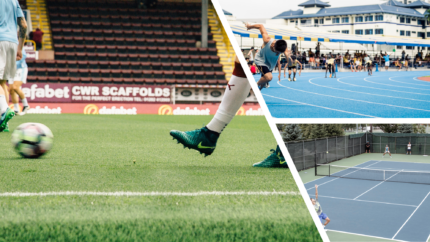I’ve just finished a personal training session with two of my top athletes, making my notes, and started thinking, can athletes get in the zone with NLP?
Can anyone get into the zone?
One of the things every athlete talks about but seldom achieves is “flow”, and being in the zone. So I did a bit of research. Athletes can and do use NLP (Neuro Linguistic Programming) to get into the zone. One of the most hands-on features of NLP, and what you’re about to uncover, is how to “program” a specific signal or reminder to prompt a desired mindset or attitude. When you put that program in place the first time, it’s done. You can “switch on” that mindset any time you need it, by triggering what sports psychologists and NLP practitioners call an Anchor.
Whether you’re an Olympian, a professional, semi-professional, Saturday morning amateur, or a retired Sunday afternoon jock like me, let’s examine what triggering and anchor mean, and what you need to do to program it in your mind and get in the zone.
What is Flow?
First let’s look at what “flow”, to “get into the zone”, is all about. If you’re reading this, you most likely have experienced “the zone” at least once in your life or you know someone who has.
Flow or Being in the Zone was first described by Mihály Csíkszentmihályi in his 1975 book Flow: The Psychology of Optimal Experience as “a state of mind where your sense of self disappears, so does your sense of time. Whatever you’re doing becomes effortless, automatic and unconscious. And, there is a sense of enjoyment, accomplishment, and happiness.”
I bet you’ve been there, in the zone I mean. Have you ever been so deeply into what you were doing that you didn’t notice what’s around you, and several hours later realized that the time had passed without you even noticing? And when you surfaced, you felt that you had experienced your best performance. This is what sports psychologists describe as flow, the feeling of “being in the zone!”
What Happens in the Zone?
Attention plays a key role in entering and staying in the flow. Getting into the zone depends on how focused you were in the past activity, how focused you are in the present, and how challenged you are. Csikszentmihalyi and his colleagues developed what I call a “Flow Chart” that shows that your interests developed in the past will direct your attention to specific challenges. Your ability to get into the Zone (the Flow State) is determined by your skill level and the challenge of the activity or opponent. When you have clear goals, get immediate feedback, and have just-manageable levels of challenge, your attention becomes completely absorbed.
Intense concentration is the defining quality of flow. Your actions and awareness are taken up entirely by the challenges being engaged. The passage of time becomes distorted because attention is so fully focused elsewhere.
However, to stay in the zone the challenge must hold your attention. If you’re bored or apathetic because the level of competition is low relative to your skills allows, your attention will drift. You become anxious when the perceived challenges exceed your skill level compared to the competition. Your attention shifts. You become self-conscious and begin to focus on your shortcomings, and this prevents you from playing or performing at your best.
When your attention is completely focused, and you are absorbed in competition, you enter a controlled state of mindfulness. Your thoughts, feelings, wishes, and actions are in synch. You experience excitement, and you want to replicate the experience. The flow state creates a mental state of growth. As you master challenges in an activity, you develop a greater skill level, and you must find the flow state again.
The best athletes find this flow state by participating in the increasingly more challenging competition.
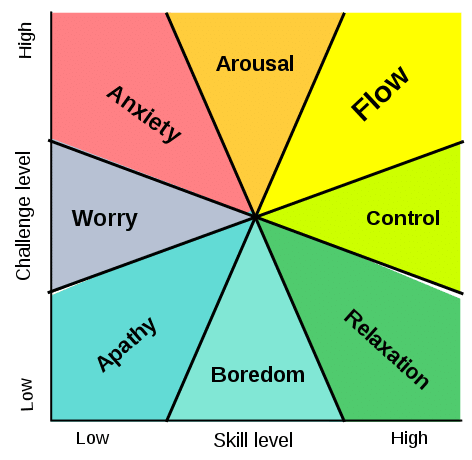
You can train your body physically by sheer persistence, but it’s much harder to train your mind. Once you reach a certain skill level, I believe playing sports becomes more mental than physical.
Unconscious Competence
When you’ve learned something well, like riding a bicycle, it moves to the realm of “unconscious competence.” You don’t need to think about it. Before you started you knew little if anything about riding a bicycle (unconscious incompetence). As you learned to balance and steer you became aware of the things you had to learn (conscious incompetence).

As you learned how to balance, pedal, and steer you became more aware of other things you could do, like let go of the handlebars (conscious competence). Now, you just hop on and ride.
And so it is with your sports performance. You’ve trained and practiced. Your body knows the moves. But the problem impeding your best performance is your conscious mind.
With my athletes, and I recommend you do too, we get in the zones by starting where you have a high skill level, where moves are in the realm of unconscious competence
How do the Best Athletes Get in the Zone?
Self-confidence is a characteristic that everyone must possess. The more self-confidence that you possess, the more chances you will succeed. But there are lots of factors that affect self-confidence that are outside your control.
A lot goes into being a pro athlete—hard training, raw talent, the ability to perform under pressure. As an athlete, you already know the importance of mental preparation when it comes to crushing your athletic goals.
For some stars, a little superstitious reasoning is the added edge they need to get into the zone.
Rituals
If you wear lucky underwear, grow a championship beard, listen to pre-game music, or do a slow clap, the science shows that observing these rituals will help you improve your game.
Research published in Psychological Science demonstrated that activating superstitions by either saying something like “break a leg”, or keeping your fingers crossed, or using a lucky charm really does lead to improved performance in sports, physical and mental skills. Researchers found that the lucky charms help to boost our ability to believe that we can master a certain task.
The Swedish tennis legend Björn Borg, known as the “Ice Man” for his confidence on the court, had rituals, some people call them superstitions, for Wimbledon. Borg always grew a beard and wore the same Fila shirt in winning five straight Wimbledon titles from 1976 through 1980. Other athletes in other sports have also grown the lucky beards, like Ben Roethlisberger during the Steelers 2006 Championship season.
Raphael Nadal, known as the “Bull from Mallorca”, and the world’s best player on the clay tennis courts of Roland Garros, has a ritual that has become well known in the tennis world.
Nadal puts on his headband only after entering the court. He pulls up his socks to a height of no more than two inches. His sponsor’s logo is parallel to the ground. He puts one chilled and one not chilled water bottle in the front of his chair. The water bottle labels face the baseline of the side he is playing on. Before he serves he clips the floor behind him with the tip of his foot, picks up his shorts, wipes his nose and tucks his hair first behind the left and then the right ear.
Adequate mental preparation is no simple feat. Goal-setting, visualization, and crafting that perfect mindset all take serious work, just like perfecting your sport.
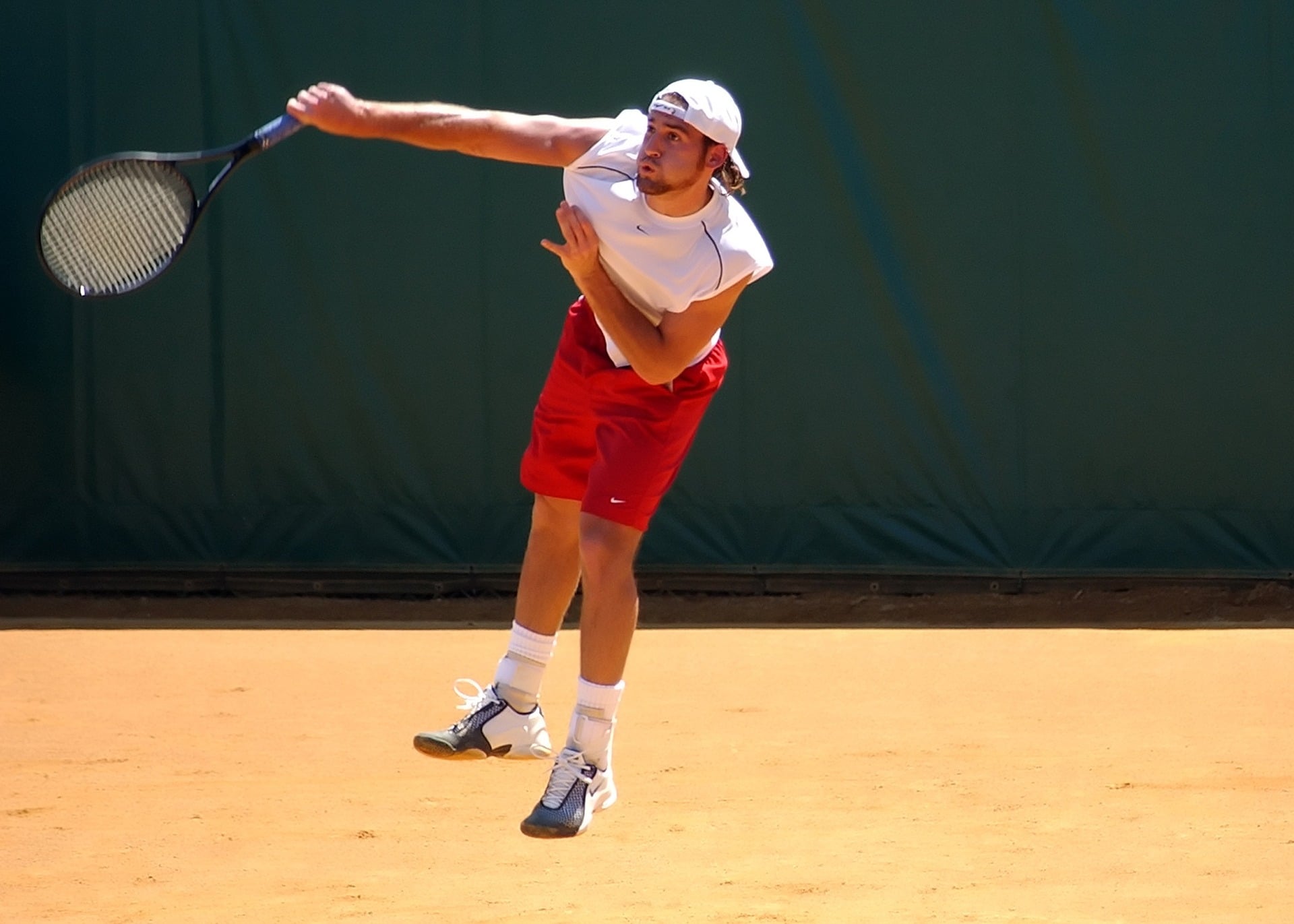
Preparing to Enter the Zone
The best performers in the world can get into the right state of mind especially in situations where their competitors are equal physically, technically, and tactically aware.
What goes through the mind of the soccer player who is about to take a penalty kick to win a world cup final in a penalty shootout, or the tennis player who is about to serve for a match of a major tournament?
How do the top players get into the zone when they have so little time? Soccer games are 90 minutes, but a player touches the ball a total of maybe 3 minutes in the game. Rory McIlroy who spends about 4-6 hours on the course playing 18 holes meets the ball less than 15 minutes! And each stroke takes seconds. I baseball a batter has a split second to decide on a shot selection.
Nomar Garciaparra used to refasten his batting gloves between every pitch. Was it a pre-performance routine or a superstition? What about when Dirk Nowitzki sings David Hasselhoff tunes before he shoots free throws?
Every athlete has different needs and every pre-competition preparation is different. However, a Neuro-Linguistic Programming (or NLP for short) strategy that you can use to get yourself into the right state of mind is called anchoring. You can use the anchoring strategy to create your own pre-performance strategy to get into the zone.
What is NLP and What are Anchors?
You may not know much about it, or maybe you do, but Neuro-Linguistic Programming (NLP for short, and not to be confused with natural language processing), is becoming a popular tool among sports psychologists, fitness gurus, and top athletes.
NLP was created more than 40 years ago, and while it is not part of the standard medical practice, it has proven to be a successful approach to personal development and self-actualization and relies on using language patterns, visualization, and hundreds, yes hundreds, of other productive techniques.
The programming in NLP refers to its practical aspects. For example, golfers like Tiger Woods and Phil Mickelson have routines that allow them to prepare in the same way for each shot, as do soccer players, place kickers, and tennis players before serving. The key to their routine is that it provides them with control and directs their attention to the important cues.
One of the most important techniques in NLP, and what you’re about to learn about in detail, is “programming” a specific cue to produce a desired mindset or attitude. Done once correctly, you can “switch on” that mindset any time you need it, by using what we’ll call anchors.
To call them “NLP anchors” is something of a misnomer because anchors occur naturally many times in our everyday lives without our even knowing it. I’ll explain.
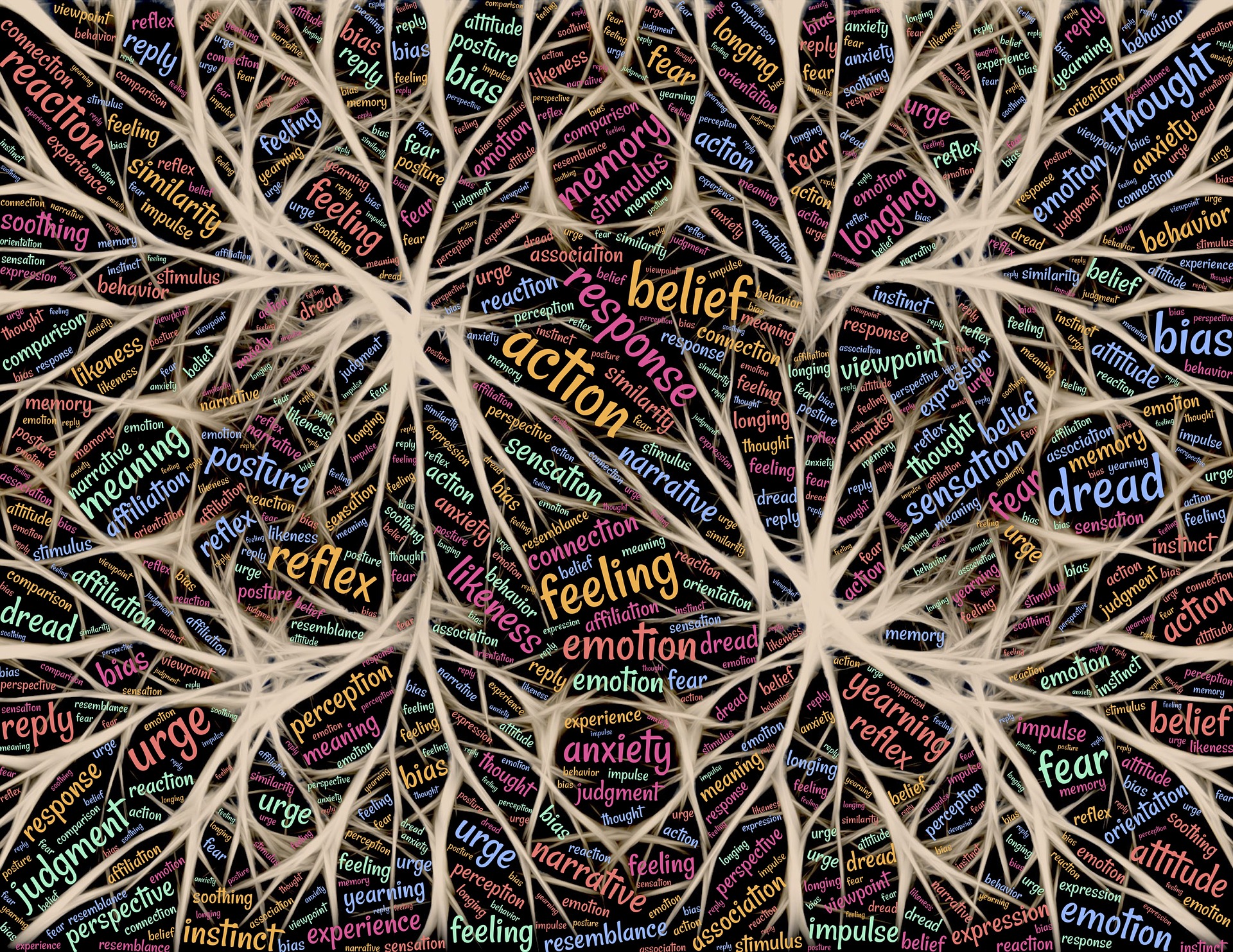
Anchors and Pavlov
A Russian scientist and Nobel Laureate, Ivan Pavlov (you learn about him in Psychology 101), was conducting experiments on the digestive system of animals when he noticed that dogs drooled whenever they saw a lab assistant. What intrigued him was that there was no food around at the time. He later learned that when the dogs were given food it was served by a lab assistant in a white coat.
So, Pavlov conducted an experiment. He decided to ring a bell whenever the dogs were fed so that they associated the sound of the bell with food. After several iterations, he rang the bell without food present and the dogs began drooling. It’s called a conditioned reflex, and we create them naturally all the time.
It’s any stimulus that changes your state and creates a response. It can involve any kind of sensory input – seeing, hearing, feeling, smelling, or tasting. It might be the taste of fresh blueberries, the smell of coffee brewing, hearing a favorite song, or seeing the photograph of a loved one, and it changes the way you feel. It’s the principle of anchoring.
When you are at the peak of experience during an intense emotional state, an applied specific stimulus can establish a neurological link between the emotional state and the stimulus. Anchoring can occur naturally or be set up intentionally and can assist in gaining access to past states and linking the past state to the present and future. Anchors can be used by both coaches and players to produce different states of mind. The list is endless: confidence, motivation, focus, and relaxation to name a few.
Sports psychologists and NLP practitioners train athletes to access intense feelings by remembering when they performed at their very best and experienced winning states.
We’re creating an association, in this case, to get you motivated, to get you pumped up.
I am going to show you how you can program an anchor in less than 15 minutes. Sound too good to be true? Not when you have the tools. I am going to show you a step-by-step process that you can use today to create get in the zone.
How to Program an Anchor in 15 minutes
- Step #1: Decide what state you want to anchor, whether it’s being calm and in control, confident, motivated or another mindset.
- Step #2: Choose an anchor. Maybe if snapping your middle finger and thumb
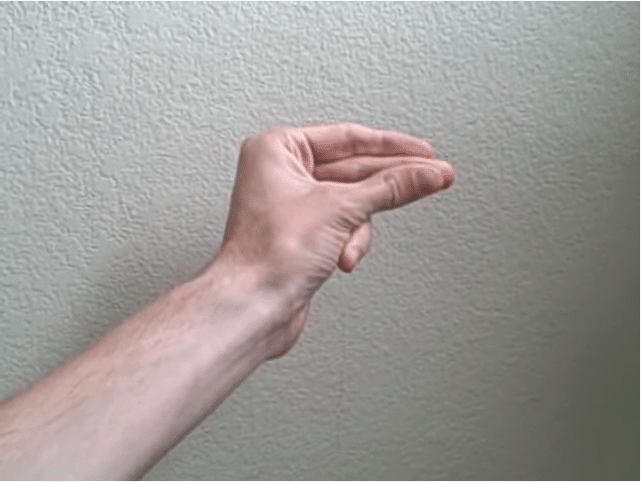
- Step #3: Recall a memory of your past performance where you were totally calm and in control, confident, motivated or another mindset.
If you were excited about it and you were going to be an active participant in it and really tap into that. Now crank everything up.
What did you see? Make it crystal clear. Now that memory of what you saw makes it even more clear than it was when it happened. What did you smell? What did you taste in that memory?
Now, sometimes not all the senses are present. Perhaps you weren’t eating anything. Or perhaps you don’t remember any particular smells. Don’t worry, crank up all the senses that were active during that time. You probably saw something. You probably heard something so crank everything up. Whatever you heard, crank that up in your memory.
It’s easier if you do this with your eyes closed. Crank it up. Really intensified now. That’s right. What you saw what you heard. If you smell anything, you tasted anything. What about your clothes when you feel them on your body? What was the temperature outside? What did you feel on your body? Go ahead in now and crank it up. Make it very real.
If you have access to game film or video footage of yourself performing to the best of your ability, then use it to enhance your recall of the events.
- STEP #4: Now, what I want you to add to this is the excitement that you felt about what was coming up. Something was coming up. Remember, in this memory, something’s going on that you’re going to participate in. You were excited about it. You’re motivated.
Now that the experience is vivid, and you are in the desired state at the peak of intensity, squeeze your thumb and middle finger.
- Step #5: As the experience begins to fade, release the anchor – snap your fingers
All right. Good. Very good. Now you can open your eyes and relax if you want to be counting down from 10 to break the state and distract yourself, or you can stay pumped up. What have we done? We’ve installed an anchor, creating an association.
Applying Your Anchor to Get in the Zone
Maybe at practice or game event try the anchor. Before the game, or at a break close your eyes and snap your middle finger and thumb. Check that the required state occurs. When you step into the moment for real, your mind gets you into the zone of play. It really is that easy.
With NLP, you automate your anchor to make you perform smarter and better. As an extremely competitive person myself, I know the joy of winning. You can have it too in your sport and your life.
And that’s it. Just remember that what NLP does is, firstly, to recognize that anchors occur naturally and then show you how you can deliberately set a positive anchor or, equally importantly, collapse a negative anchor.
So remember, the next time you need to get in the zone, all you must do is snap your fingers.
References
Csikszentmihalyi, Mihaly. Flow: The Psychology of Optimal Experience. Harper Row, 2009.
Damisch, L., Stoberock, B., & Mussweiler, T. (2010). Keep Your Fingers Crossed!: How Superstition Improves Performance. Psychological Science, 21(7), 1014–1020. https://doi.org/10.1177/0956797610372631

